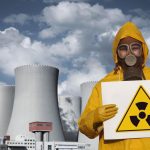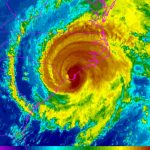
Belarusian mushrooms found to be contaminated with radioactive cesium
Friday, December 01, 2017 by Frances Bloomfield
http://www.nuclear.news/2017-12-01-russian-mushrooms-found-contaminated-with-radioactive-cesium.html

A shipment of Belarus mushrooms has been seized by French officials due to low-level radiological contamination. As reported by Yahoo.com, customs officials discovered that the 3.5-ton shipment, coming through Frankfurt, Germany, contained traces of cesium-137 or radiocaesium.
Though the shipment of mushrooms wasn’t stated to be a health threat, they will still be destroyed using a specialized incinerator. “As the mushrooms came from Belarus, it is very likely the contamination originated in Chernobyl,” remarked an official from the Institut de radioprotection et de sûreté nucléaire (IRSN).
“There is no link with the ruthenium 106 pollution,” the official added, referring to an earlier incident in October where a cloud of radioactive ruthenium 106 blew over a large portion of Europe. The cloud was said to have originated from southern Russia, and the nation itself acknowledged that the Ural mountains — which runs from north to south through western Russia — had an alarmingly high rate of ruthenium pollution. However, the country has not spoken about any possible accidents involving ruthenium.
Following the discovery of ruthenium, French consumer protection agency Direction générale de la concurrence, de la consommation et de la répression des fraudes began testing food products from regions that had been affected by the cloud. The agency has stated that, thus far, it’s found no food items with dangerous levels of ruthenium 106. (Related: Chernobyl: 30 years later, here’s what food grown there looks like.)
The news comes shortly after a recent article by the Belarusian news portal UDF. According to the publication, state institution Bellesakhova found that 41.9 percent of mushrooms in Belarus were contaminated with cesium-137. Of the 280 mushroom samples tested for this radioactive material, 117 were discovered to have cesium-137 concentrations that exceeded the acceptable level of 370 becquerels per kilogram.
Of mushrooms, radiation, and Chernobyl
Compared to other vegetables, mushrooms pose the greatest risk when it comes to radiation. The lack of stems and roots has made it so mushrooms absorb nutrition from the environment through skin cells. As a result, mushrooms are prone to soaking up radioactive substances.
This makes it disturbing but not at all surprising that Belarusian mushrooms contain cesium-137, which is one of the isotopes distributed by the reactor explosion that rocked the Chernobyl Nuclear Power Plant. The power station is located south of the Belarusian border, and has since become infamous for the Chernobyl disaster.
Among the most famous nuclear accidents in history, the Chernobyl disaster occurred in 1986, yet its effects continue to be felt to this day. Cesium-137 has a half-life of 30 years, meaning that it can still be found in the areas surrounding Chernobyl.
And while Belarusian mushrooms do run the risk of being radioactive, the degree of nuclear contamination varies greatly depending on the type of mushroom. As a general rule, mushrooms that have pines beneath their caps; are porous; stalked; or gilled are the ones most prone to accumulating radiation.
As per HealWithFood.org, these mushrooms are said to be the types with the highest radioactivity:
- Almond woodwax
- Chocolate milky
- Goat waxycap
- Grey knight
- Hedgehog mushroom
- Milky caps
- Ochre brittlegill
- The gypsy
- Trumpet chanterelle
- Velvet bolete
- Weeping milky
- Wood hedgehog
In addition to mushrooms, the Chernobyl disaster is said to have affected various other food products in neighboring European countries, namely raspberries, wild strawberries, cranberries, blackberries, and even wild game.
Stay aware of what goes into your food by visiting FoodSupply.news today.
Sources include:
Tagged Under: Tags: Belarus, cesium, contamination, food safety, Mushrooms, radioactive isotopes, Radioactivity





